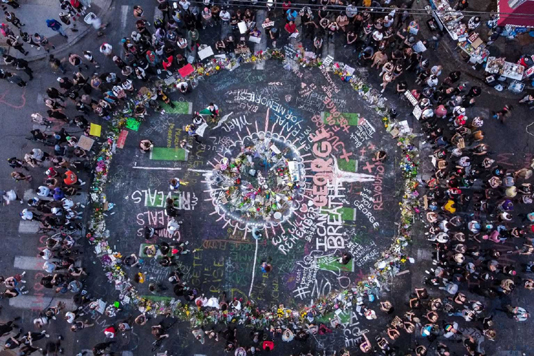WASHINGTON, June 3, 2020 (BSS/AFP) – Thousands of people protesting at
close quarters, shouting demands and coughing violently when hit by tear gas:
experts fear demonstrations roiling the US could reignite the spread of the
coronavirus.
But, stress clinicians and researchers, racialized police violence itself
remains a grave and neglected public health crisis for African Americans,
threatening not just their lives but raising the risk of stress-related
diseases from heart failure to cancer.
It has been just over a week since George Floyd, an African American man,
died after a white police officer knelt on his neck for several minutes,
sparking a wave of protests across the country against institutional racism.
For Ebony Hilton, a physician at the University of Virginia hospital who is
herself black, the issue highlights what she calls the threat of the two
pandemics: COVID-19, and police brutality.
“We are expecting to see a spike (in coronavirus cases) because there’s no
social distancing and unfortunately most people wear their masks incorrectly,”
she told AFP.
Law enforcement agencies have routinely fired tear-inducing pepper spray and
tear gas, a nerve agent that causes intense burning, in order to disperse
crowds.
On Monday, for example, federal police hit peaceful activists in Lafayette
Park outside the White House with rubber bullets and tear gas in order to let
President Donald Trump get a photo-op at a historic church that had suffered
damage the night before.
“The pepper spraying and resulting coughing/gagging also heightens risk,”
said Hilton.
“Additionally, COVID can be spread via droplets on eyes and many aren’t
wearing goggles.”
– Police a ‘public health threat’ –
Even so, said Hilton, it was important to contextualize why people were
willing to take these risks. A study carried out in 2019 found that black men
are 2.5 times more likely to be killed by the police than their white
counterparts.
“We think that there’s ample evidence that police are a threat to public
health in the United States,” Rutgers University’s Frank Edwards, the lead
author of the paper, told AFP at the time.
Relying on media reports as well as official data, Edwards and colleagues
estimated one fatality from police use of force for every 1,000 black male
births. Police violence is a leading cause of death for black men aged 20-29,
just behind cancer.
Cav Manning, a 52-year-old emcee from New York, is just one of tens of
thousands nationwide willing to risk coronavirus as he joined a protest in
Brooklyn on Monday evening.
“What we saw is so disturbing that we’ve got to be out here right now,
despite COVID, despite the fact that you might get infected,” he told AFP.
The problem isn’t just the high profile deaths that make the news, but the
psychological stress inflicted on African Americans continually targeted by
police.
“What we know is that chronic stress is directly linked to increased risk of
cancer formation, directly linked to hypertension, to diabetes, to heart
failure, to obesity,” said Hilton.
– Precautions stressed –
The demonstrations come as the number of new coronavirus deaths in the US,
the world’s hardest hit country, continues to decrease after peaking in mid-
April, and as states partly reopen their economies.
Research has linked warmer summer months to a decreased COVID-19 spread in
temperate parts of the world.
Brandon Brown, an epidemiologist at the University of California Riverside
said that while the expected risk of COVID-19 transmission is lowered
outdoors, it is not reduced to zero, especially when people are unable to
physically distance when faced with charging police.
“It is important to wear a mask not only to protect yourself against COVID-
19, but also from state surveillance,” he emphasized.
Robert Glatter, an emergency physician in New York added that the aerosol
produced by tear gas itself could potentially act as a carrier that projects
viral droplets far deeper into a crowd than they would otherwise have
traveled.
All of these factors have combined to make public health professionals very
nervous about the impact two or so weeks down the line.
This is particularly since the protests feature large numbers of blacks and
other minorities who are at higher levels of risk from COVID-19 because of
underlying health conditions that worsen the disease’s progression.
Manning, the emcee, said he and others were aware of the danger.
“But this is also something that is happening for the health of the nation.”



